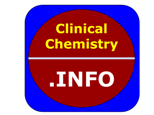Clin Chem. 2025 Oct 14:hvaf123. doi: 10.1093/clinchem/hvaf123. Online ahead of print.
ABSTRACT
The European Union (EU) In Vitro Diagnostic Regulation (IVDR) imposes stringent obligations on laboratories using in-house in vitro diagnostic devices (IH-IVDs), yet offers limited clarity on whether discrete work flow steps may be subcontracted while maintaining compliance with Article 5(5). This Special Report identifies 3 systemic challenges that amplify regulatory uncertainty: (a) fragmented national implementation of the IVDR, (b) disparities in the application of ISO 15189-based quality systems, and (c) the withdrawal of Conformité Européene (CE)-marked IVDs from the market, often replaced by research use only (RUO) products that shift the regulatory burden to public laboratories. These dynamics disproportionately affect diagnostics for rare diseases, emerging pathogens, and precision medicine, areas where commercial IVDs are often unavailable or withdrawn for cost reasons. Laboratories are increasingly compelled to adopt RUO products within IH-IVD work flows, accepting legal and clinical responsibility for analytical validity without clear regulatory protection. At the same time, innovation in academic and translational settings is hindered by uneven national oversight, premature enforcement of deferred IVDR clauses, and the absence of a harmonized European compliance model. We analyze these pressures through the lens of the respective Medical Device Coordination Group (MDCG) guidance, current national practices, and ISO 5649:2024-a newly published standard offering risk-based governance of IH-IVDs. ISO 5649 enables safe subcontracting under strict accountability and provides a structured compliance pathway aligned with the IVDR. Without urgent coordination across Member States and adoption of such frameworks, the EU risks undermining both patient access and diagnostic innovation under the banner of regulatory harmonization.
PMID:41092101 | DOI:10.1093/clinchem/hvaf123
